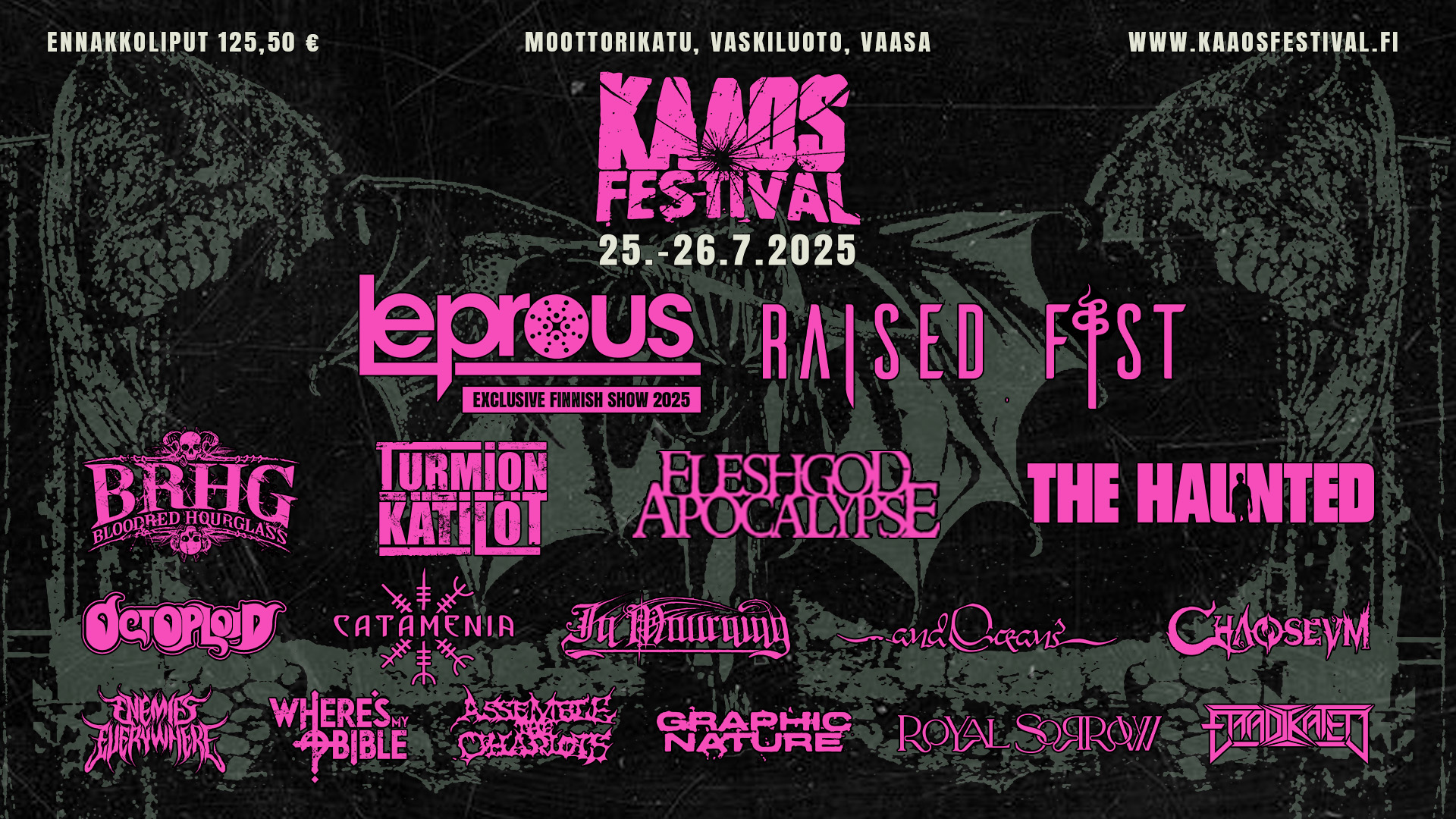Mikä saa ihmiset moshaamaan? Näin tiede selittää ilmiötä
 Raskaamman musiikin konserteissa yleisö jakautuu useimmiten kahteen ryhmään: eturivin adrenaliinia puhkuviin moshaajiin sekä heihin, jotka seuraavat esitystä mielummin sivusta. HopesAndFears.com-sivusto on nyt selvittänyt yliopistojen opiskelijoita, yhtyeiden jäseniä sekä muita asiantuntijoita haastattelemalla, mikä saa musiikin kuuntelijat mukaan mosh pittiin tai muhuun ulkopuolisille väkivaltaiselta vaikuttavaan toimintaan. Yhdysvaltalaisen Ill Nino -yhtyeen vokalisti Christian Machado kommentoi aihetta seuraavasti:
Raskaamman musiikin konserteissa yleisö jakautuu useimmiten kahteen ryhmään: eturivin adrenaliinia puhkuviin moshaajiin sekä heihin, jotka seuraavat esitystä mielummin sivusta. HopesAndFears.com-sivusto on nyt selvittänyt yliopistojen opiskelijoita, yhtyeiden jäseniä sekä muita asiantuntijoita haastattelemalla, mikä saa musiikin kuuntelijat mukaan mosh pittiin tai muhuun ulkopuolisille väkivaltaiselta vaikuttavaan toimintaan. Yhdysvaltalaisen Ill Nino -yhtyeen vokalisti Christian Machado kommentoi aihetta seuraavasti:
”We mosh because we war dance. We are primordial in many ways and this war dance called moshing is not just a dance it is a culture embedded in our culture. The human reaction to extreme music is much like the human reaction to extreme consequences, war. In moshing, we simply practice the art of war amongst friends. Capoeira is also a war dance that can be very much compared to moshing except capoeira applies a lot of martial arts and moshing doesn’t necessarily have to.”
Turvallisuuteen erikoistuneen Crowd Management Strategies -yhtiön johtaja ja perustaja Paul Wertheimerilla on syvällisempi näkemys aiheesta:
”From what I have observed as a concert crowd safety expert, and personally, as a fan, I have identified a number of motivating forces that entice people into the mosh. As I see it, people mosh:
For the exhilarating feeling of camaraderie when people—absent of aggressive or violent intent—playfully touch, push, press upon, shove and butt each other. (This moshing style I describe as ’chaos with etiquette.’)
To signal to performing artists, in a way that will clearly be understood, that the audience, or a portion of the audience, gets what the artist is communicating through music.
As a right of passage for some music fans.
To prove equality between the sexes, where the more adventurous females are willing to test their will, agility, strength and moxie with their male counterparts.
BECAUSE OF PEER PRESSURE.
There is also a dark side to moshing. We’ve all seen this at concerts and festivals where poorly manage mosh pits exist. The world saw it in 1999 at Woodstock. In the mayhem of large mosh environments and violent mosh pits, a segment of highly aggressive and criminally reckless participants often operate. It is here that individuals, who under the cover of anonymity, darkness and poor crowd management and security, choose their victims. The price paid by too many music fans is high: sexual assaults, physical assaults, critical injuries, death, and confrontations that can later turn violent after a show.”
Yhdysvaltalaisen punk-yhtye No Parentsin kitaristi Ryan McGuffin uskoo kaiken takana olevan halu koskea toisia:
”Moshing to me is like football, or really any sport… I think people just want to touch each other. I prefer hugging myself, but the kids are gonna do what they’re gonna do.”
Iso-Britannialaisessa Leeds Becket -yliopistossa tohtoriksi opiskeleva Gabby Riches selittää ilmiötä seuraavasti:
”For over five years now I have been examining the significance of moshpit practices and the role it plays in the everyday lives of extreme metal fans. For many outsiders who are not familiar with heavy metal music and its practices, the moshpit is seen as a violent, uncontrolled, masculine and dangerous space. But for many metal fans the moshpit is considered a safe, self-contained and welcoming space that evokes a strong sense of belonging where metal fans can express themselves maximally and foster stronger connections with the band and other people in the venue.
People mosh in order to be part of and actively involved in the raw, visceral experience of a live metal performance. This is expressed by one female fan who I interviewed in Leeds: ’it’s almost like being part of the music you know it’s all going up and down with the beat and you’re bashing around and everything, it’s that big sense of communal energy.'”

